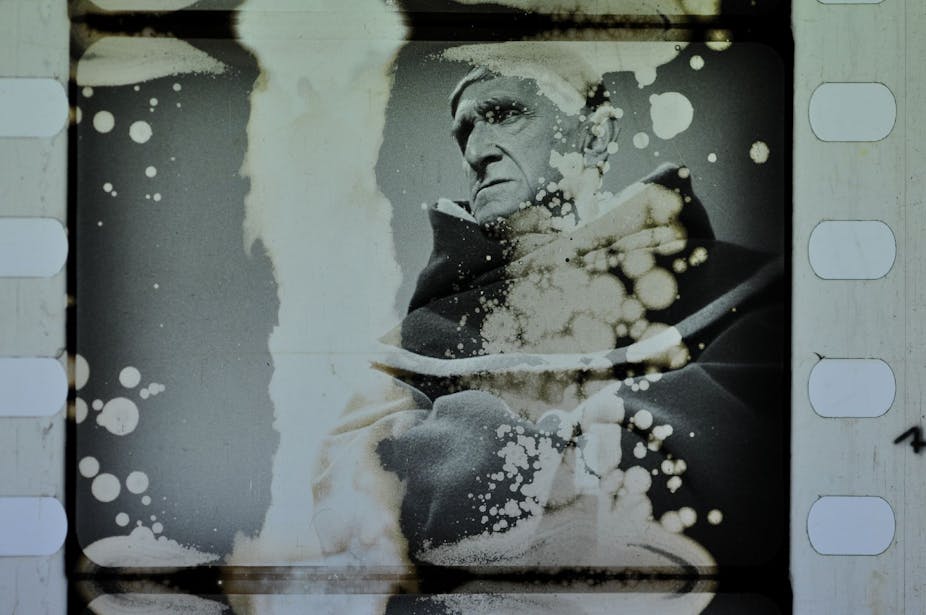It goes without saying these are difficult times for the country’s museums and archives. In recent months, the National Library, War Memorial, Powerhouse Museum in Sydney, and others, have all flagged belt-tightening and cutbacks to services or staff.
But the response to cuts at the nation’s leading repository for film, radio and television, the National Film and Sound Archive (NFSA) may be unique. This month, the NFSA has been conducting a fence-mending exercise with its stakeholders after a restructure, detailed three months ago, drew an angry reaction.
Who has a stake in the NFSA?
In April, the NFSA management announced cuts to its programs, after a six-month review of its operations. Some 28 staff – 13% of the Archive’s total workforce – were put off.
Members of the Archive’s constituency, including leading film and program makers, critics and researchers, demanded an explanation, citing the human cost and the lack of prior consultation.
None of this should have come as a surprise to the Archive’s executive.
People who work in the film, video and audio industries draw on the Archive for their productions. But they also rely on it to ensure the long-term preservation of their work. Audio-visual materials date with each technical advance and are thus more difficult and expensive to maintain than printed works. So program makers generally have a deeper relationship with the NFSA than writers, say, have with the National Library.
Moreover, the NFSA’s stakeholders have been fundamental to its history. In the early 1980s they lobbied to have the audio and moving image collection made independent of its then-home, the National Library. They were active again when the Archive was absorbed into the Australian Film Commission in the early 2000s. The NFSA has been a statutory authority since 2008.
Public consultation
The NFSA responded to demands for consultation by scheduling a public meeting in each of the mainland capitals throughout July. The last will be held in Perth at the end of the month.
Mea culpas have been delivered. Chair of the NFSA’s Board, Gabrielle Trainor told the first of the meetings in Sydney on July 1, which I attended, that the organisation hadn’t “done enough to talk to and listen to stakeholders” and that it needed to be “serious about engagement”. CEO Michael Loebenstein promised a lesson had been learnt and that there would be “more public engagement”.
‘Digitise or die’
The previous month the NFSA had released a three-year Draft Strategic Plan, which sets out the pressures it faces; from a shortfall in expected revenues to the demands of the digital age.
Key points include:
- The Archive must “digitise or perish” otherwise the bulk of its collection will be effectively inaccessible.
- The last annual report put the collection at just over 2 million works, growing at 50 000 a year.
- At last year’s rate of digitisation, it will take nearly a century to digitise the audio and moving image collection and by then the original analogue formats will be unusable.
- Digital-born materials are also a concern because of format obsolescence. “Files can’t wait” is the new mantra.
- Bulk digitisation is expensive and will require significant funding. The Archive is eyeing overseas examples, including public-private partnerships.
At the heart of the NFSA’s vision is a shift towards greater public access.
Traditionally, audio-visual archives have emphasised preservation and put access second. This is enshrined in the Code of Ethics of the umbrella body, the FIAF International Federation of Film Archives (FIAF).
Speaking in Sydney, NFSA CEO Michael Loebenstein said there had been a “cultural shift” in the last decade or so and that access was now the “premise on which archives need to be built”. By 2017, he said he hoped the NFSA would be seen not just as a “storehouse” – but as a place where the collection was properly preserved and also discoverable. At present, only about 40% of the collection is searchable online and only about 1% is publicly available online.
Extending legal deposit
As digital materials become an increasing part of the NFSA’s focus, it has flagged a greater push for legislative change to make acquisition easier. It wants legal deposit extended to audio-visual materials, including broadcasts.
At present, radio and television broadcasts are collected by agreement with stations and networks. But the process is cumbersome and it’s too easy for historically important material to slip through the net.
The Copyright Act 1968 requires that publishers in Australia give the National Library one copy of a broad range of printed works from books, to pamphlets to maps. But there is no corresponding requirement for film, television and radio output. The result is a significant hole in our collective and historical memory.
Efforts to remedy this have been inching along for years. In the analogue world, one of the biggest stumbling blocks was the cost to production and broadcast companies of supplying material. But in the digital era, where material can be captured, the big obstacle is copyright – and the NFSA wants to “collect first and notify later”.
Right now, some 90% of digital production in Australia disappears before the NFSA has a chance to grab it. Michael Loebenstein says extending legal deposit is at the “top of his bucket list”.
Media researchers should be watching with interest.

